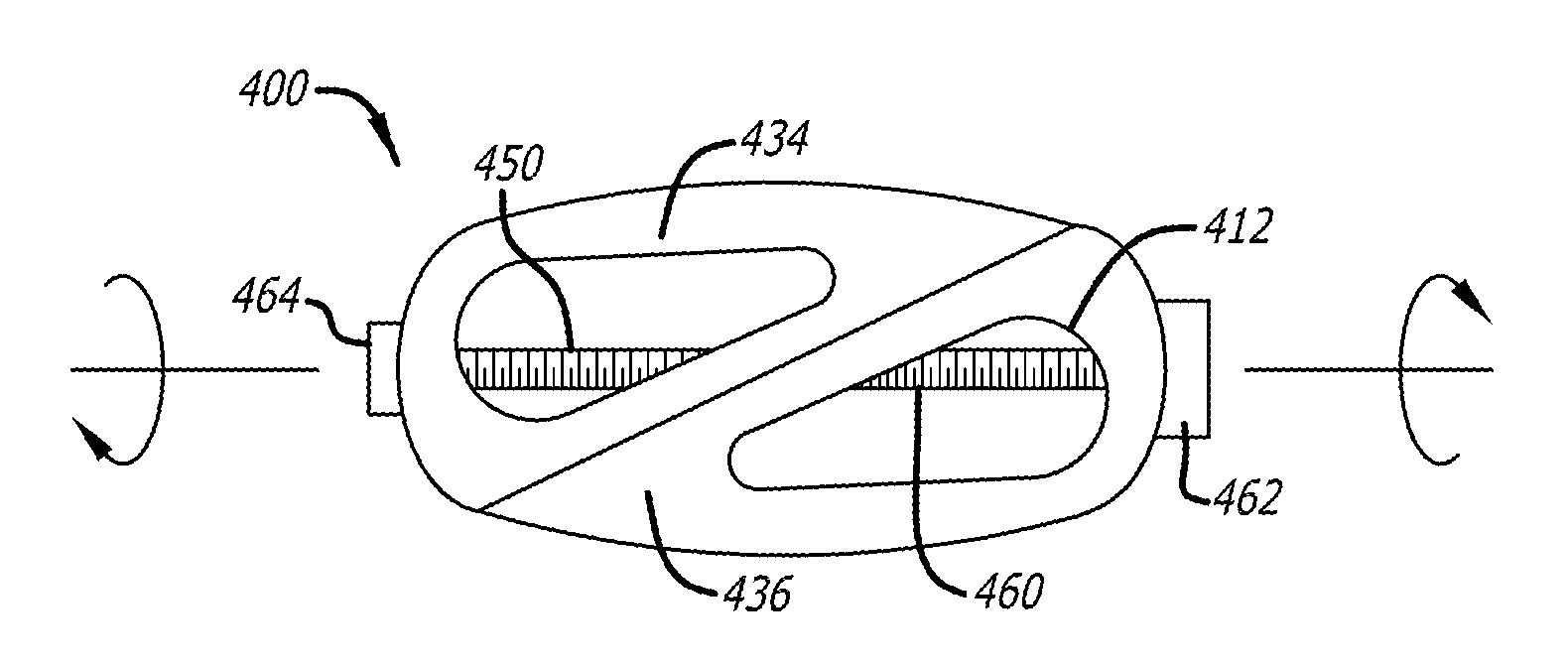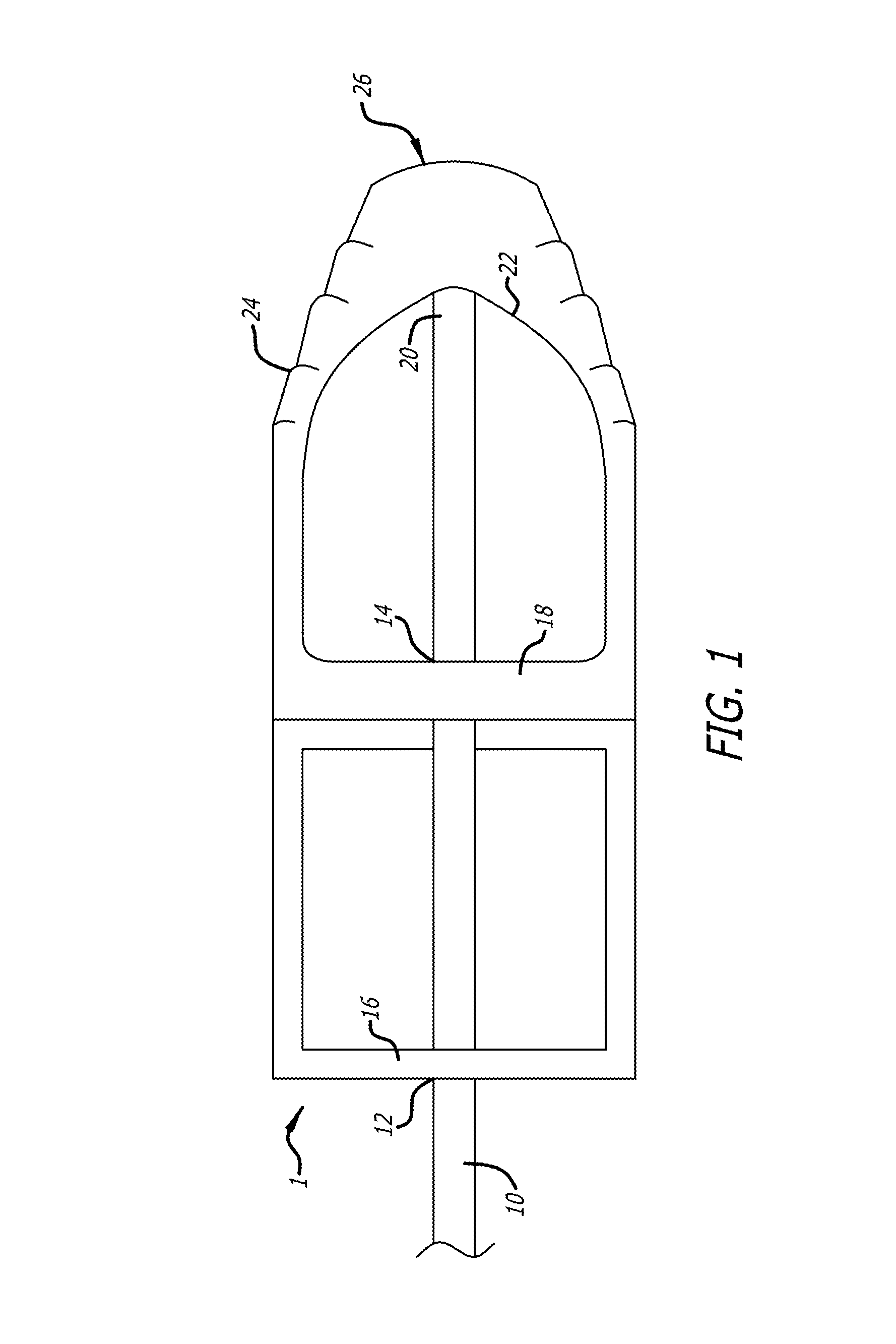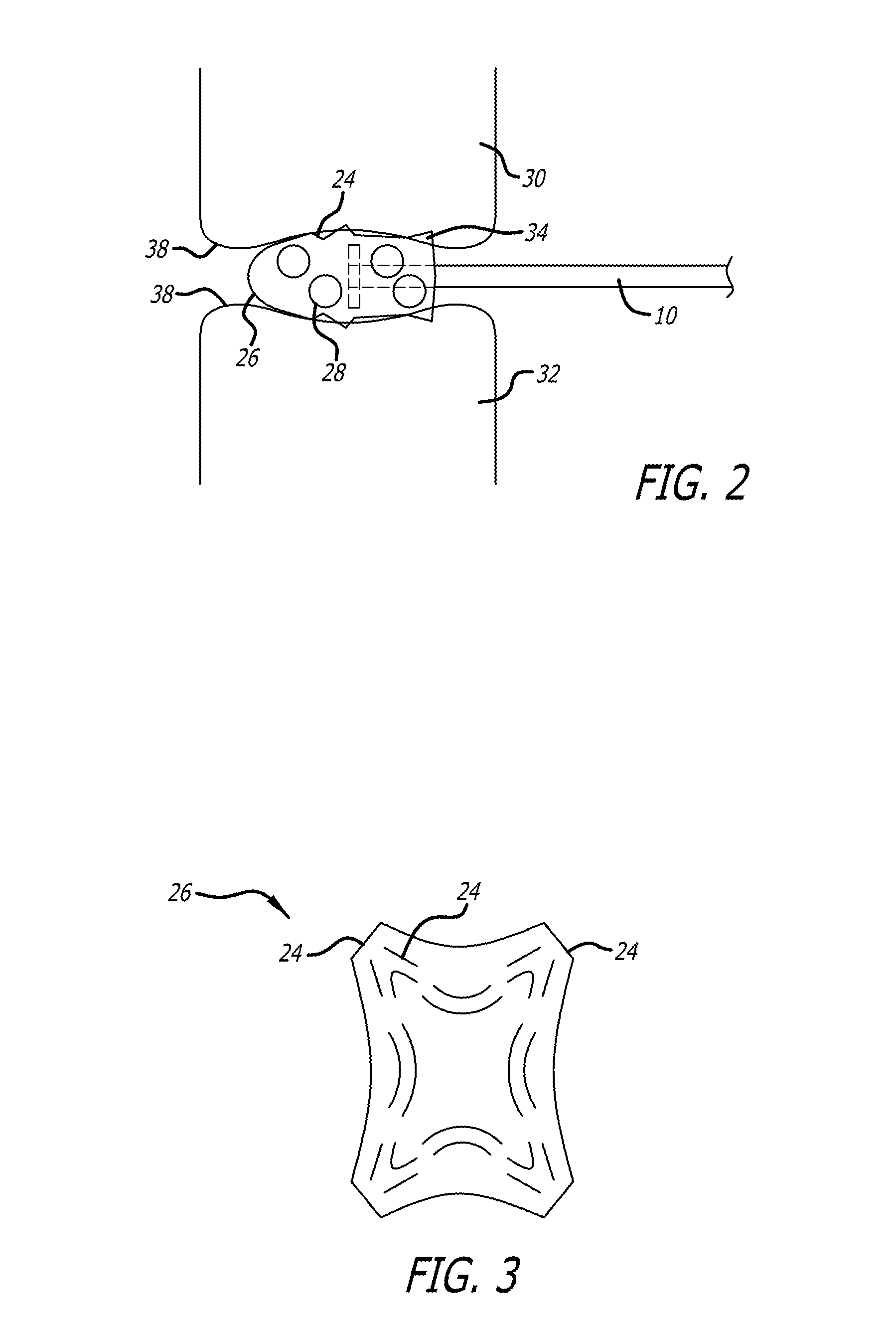System and method for spinal fusion
a spinal fusion and system technology, applied in the field of spinal fusion system and method, can solve the problems of reduced disc vertical height, increased biomechanical stress on the posterior side of the spine, and decreased viscoelastic properties
- Summary
- Abstract
- Description
- Claims
- Application Information
AI Technical Summary
Benefits of technology
Problems solved by technology
Method used
Image
Examples
Embodiment Construction
[0027]FIG. 1 shows a top view of an interbody cage 1 and an insertion rod 10. The cage 1 includes a substantially square and hollow main portion 2 and a nose 26. Bone graft with biological materials, such as morphogenic protein and derivatives, can be placed inside of the cage 1 to allow the cage 1 to be fused and incorporated into the boney structure of the adjacent vertebrae once the cage 1 is inserted.
[0028]The insertion rod 10 projects through axial openings 12 and 14 of the back wall 16 and middle septum 18, respectively, of the cage 1. A distal end 20 of the insertion rod 10 abuts an internal, distal end 22 of the cage 1, and is shaped to match the internal, distal end 22 of the cage 1. This shape serves to evenly distribute an insertion force exerted by the insertion rod 10 onto the internal, distal end 22 of the cage 1.
[0029]The middle septum 18 of the cage L comprises a rigid girder fixed to the interior surface of the cage 1 and located in a plane transverse to the project...
PUM
| Property | Measurement | Unit |
|---|---|---|
| diameter | aaaaa | aaaaa |
| height | aaaaa | aaaaa |
| height | aaaaa | aaaaa |
Abstract
Description
Claims
Application Information
 Login to View More
Login to View More - R&D
- Intellectual Property
- Life Sciences
- Materials
- Tech Scout
- Unparalleled Data Quality
- Higher Quality Content
- 60% Fewer Hallucinations
Browse by: Latest US Patents, China's latest patents, Technical Efficacy Thesaurus, Application Domain, Technology Topic, Popular Technical Reports.
© 2025 PatSnap. All rights reserved.Legal|Privacy policy|Modern Slavery Act Transparency Statement|Sitemap|About US| Contact US: help@patsnap.com



